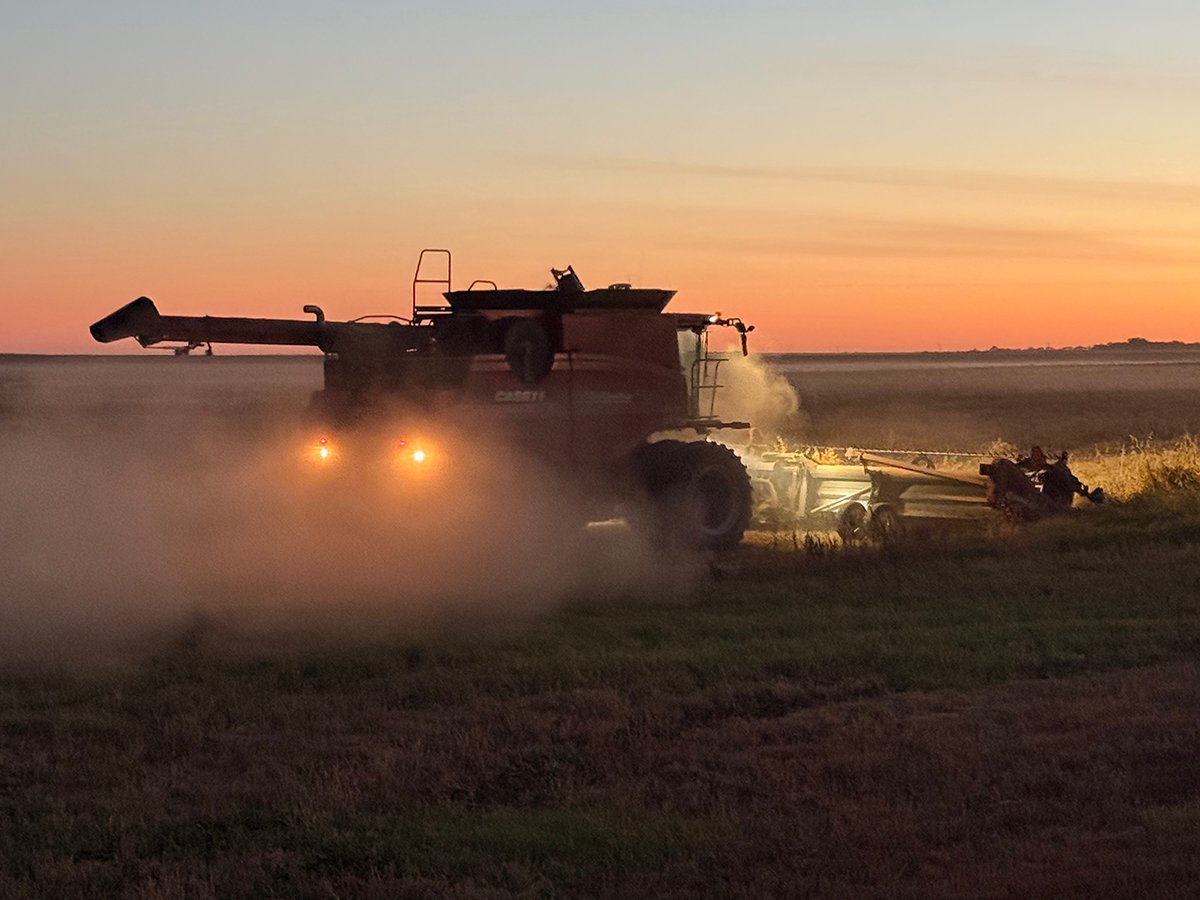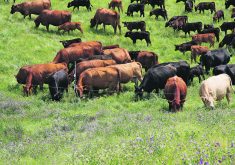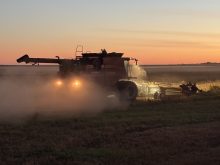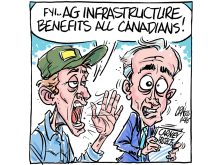Cheap food; Cow crisis; Global cooling; Favour status quo; Welfare labels
Cheap food
Record grain prices have sparked new optimism in agriculture but the more things change, the more they stay the same.
World averages for milling wheat increased to $13.20 last crop year, but the similar Canadian Wheat Board Vancouver pooled price was only $10.13.
Many farmers selling fixed price contracts got considerably less simply because we receive zero information and assistance in marketing.
We have no storage incentives or quota systems and farmers have shied away from stabilizing prices by taking rightful control of world grain and livestock futures.
Read Also

Downturn in grain farm economics threatens to be long term
We might look back at this fall as the turning point in grain farm economics — the point where making money became really difficult.
The money we are losing on these over-manipulated markets is unbelievable. Funds are experts at squeezing down prices and only spike them when we have nothing left to sell.
With many poor crops and lower prices this year, we should be buying back our production on paper and hoping for higher prices.
However, this idea will only work if we have the capital to threaten funds into delivery and we are prepared to accept large amounts of grain. This would not have to happen very many times, if ever.
Nobody talks numbers anymore but farmers are losing. Our product and land values are ridiculous, which will only get worse as corporate farms begin to falter.
Our government-owned grain system will never be satisfactory since it reflects domestic virtues and values, which do not compare to world prices.
The reason no one seems concerned is obvious: everyone loves cheap, high-quality food and we supply plenty of both.
Farmer-controlled boards and commissions could help. It is amazing what we could accomplish if we would only try.
When you stop to think about it, cattle boards and grain commissions do not belong to Stephen Harper or the dominion of Canada. They belong to the people, right?
Wouldn’t that be us?
– Louis K. Berg,
Sedalia, Alta.
Cow crisis
Many people don’t understand what is happening in the cattle business. Many consumers see high prices at the meat counter and can’t understand how cow-calf producers are crying poverty.
I hope I can shed a bit of light on the problem.
What does it cost to produce a calf that eventually ends up as food? These figures represent my costs and my income from each cow I own. I suspect they are fairly average costs.
First of all, a bred cow costs in the neighborhood of $1,000. At five percent interest per year, this costs me $50 against each calf produced.
That cow has a salvage value of about $600 at 10 years of age. Hopefully, I have eight live calves over her lifetime, so the depreciation costs me another $50 per calf.
To feed her on pasture for 185 days costs me $185.
To feed her in the winter costs me about $195. Throw in $10 for bedding, $205.
Salt and mineral $20.
Vaccine and vet $20.
Breeding costs $30.
Fence and corral repair $20.
Utilities $10.
Selling costs $25.
Cost to winter feed $40 (tractor, bale truck, whatever.)
Total: $655.
Now the income side:
Say we raise a 600 pound calf. Steers quoted Nov. 14, 2008, are $107.50 per lb. or $645. Heifers quoted Nov. 14 are 95 cents per lb. or $570.
So the average return works out to $607.50.
This is based on a 100 percent calf crop, which is rare in any commercial herd. Instead, I would say a 97 percent calf crop would be very good, so now our return is $589.28.
I have not included any labour in the equation, or any other costs for checking cows, calving cows, moving cattle around or processing calves.
I am real funny in that I hate to work for free.
I would hope I could get minimum wage for the work I do especially when it is -40 C with that old cold wind blowing. So let’s say 10 hours per year per cow at $8 per hour or $80 per cow per year.
Add that $80 to the $655 in costs and we are at a break even of $735.
This figure does not include operating interest costs or any kind of death loss for mature animals.
What this means is, on every ideal cow I am losing, out of my pocket, $127.50 to feed the consumer some very cheap beef. Clearly, this just isn’t sustainable.
In 2009 we will probably see much higher winter feed costs. The feed costs I quoted were based on $60 per ton hay in 2008.
I suspect economics will dictate that every cow in Western Canada should be killed before winter. Will it happen? No, it won’t. Many people have no problem paying to work.
I would be much better off selling my cows and getting a job as a greeter at Wal-Mart. Does anyone know if Wal-Mart is hiring?
– Douglas J. Malsbury,
Penhold, Alta.
Global cooling
Jack Pawich of Cartwright, Alta., (Open Forum, July 2) does not believe in the theory of global warming and neither do I.
In fact, I could sooner believe that we are in a period of global cooling. All the evidence seems to be pointing in that direction.
Fifty to 60 years ago, we used to get out on the land by early April. During the last 15 to 20 years, we very seldom are able to seed before May 10 or later.
We just have lived through the coldest winter and spring in 50 years. This year the grass was not ready for grazing until late May. Cows had to be dry-fed until a week before June. Going back a half century, we usually were able to pasture cows by May 1.
For many years now the summers have been cooler. We very seldom experience the stifling heat that we endured during the 1930s or for that matter the 1940s, 1950s and 1960s.
In recent years our furnace occasionally has cut in even in June. In fact, this very morning (July 3) the temperature dropped to 11 C.
I personally believe the theory of global warming is the biggest hoax ever pulled on the people of this earth. It is very deliberate and has its deceptive purpose.
My long life has taught me the biggest deceivers are to be found in high places – powerful world leaders, big government and the most powerful government of all, the United Nations.
These people and institutions operate under the concepts of religious humanism. One of their core beliefs is that any means are justified by the ends desired.
The aforementioned people and institutions believe that we are destroying Mother Earth through excessive human procreation. Therefore, it is OK to tell the big lie about global warming and its cause in order to convince people to beget less children.
This deceitful policy has been a very effective tool. The birth rate in Canada and in most of the rest of the industrialized countries around the world has dropped to less than 1.5 children per woman, far below replacement level.
I am convinced we, the citizens of this world, must be very concerned and must attempt to deflect our world leaders from this destructive deceitful direction.
– George E. Hickie,
Waldron, Sask.
Favour status quo
Ten years ago, Ralph Goodale was asked this question: What happens if a majority on the CWB board of directors votes to end the monopoly?
His answer: The government of the day will have to determine if that is what the majority of the farmers really want.
There you have it in a nutshell. It is funny how democracy works when it comes to this issue.
According to the Liberals, a convoluted preferential balloting process that favours the status quo is the very epitome of democracy, but a mere plebiscite of all farmers is a dangerous corruption of the democratic process.
– Richard Brooks,
Wynyard, Sask.
Welfare labels
Re: “Welfare labels come to Canada,” (WP, June 11.)
Thank you for your stories on welfare labels and raising the bar for animal care. There is one point, however, which should be added. Welfare labels are already in Canada.
Many food certification programs include animal welfare; certified organic is the first that comes to mind.
Programs solely certifying farms to farm animal welfare standards also exist in Canada, and they have for some time….
The B.C. SPCA’s food labelling and certification program SPCA Certified was launched in 2002. With farms certified in B.C. and Alberta, SPCA Certified products can be found in retail outlets, local farmers markets and through the farm gate.
SPCA Certified farms are inspected by third-party validators to farm animal welfare standards. We collaborate with scientists, veterinarians, agriculture industry experts and farmers to promote the program, develop standards and address key animal welfare issues facing us today.
This is a timely discussion; I look forward to reading more about animal welfare and animal care in The Western Producer.
– Alyssa Bell Stoneman,
Animal Welfare Co-ordinator
B.C. SPCA,
Vancouver, B.C.
















